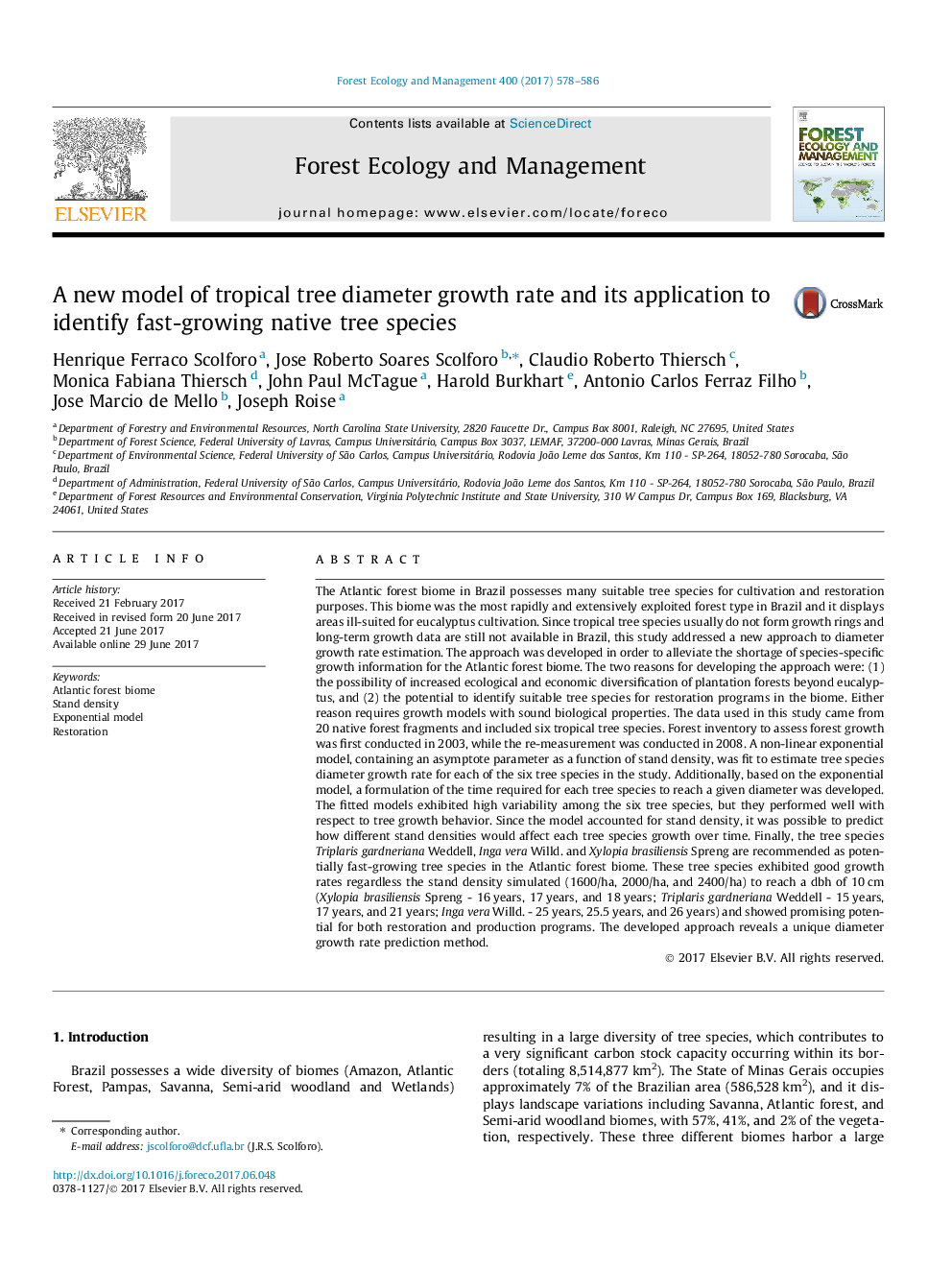| کد مقاله | کد نشریه | سال انتشار | مقاله انگلیسی | نسخه تمام متن |
|---|---|---|---|---|
| 6459303 | 1421358 | 2017 | 9 صفحه PDF | دانلود رایگان |
- Identification of potentially fast growing native tree species.
- Exponential model with stand density to predict dbh growth rate.
- Development of a new formulation based on the exponential model form.
- Estimation of time required for a tree to reach a given dbh is possible by the formulation.
The Atlantic forest biome in Brazil possesses many suitable tree species for cultivation and restoration purposes. This biome was the most rapidly and extensively exploited forest type in Brazil and it displays areas ill-suited for eucalyptus cultivation. Since tropical tree species usually do not form growth rings and long-term growth data are still not available in Brazil, this study addressed a new approach to diameter growth rate estimation. The approach was developed in order to alleviate the shortage of species-specific growth information for the Atlantic forest biome. The two reasons for developing the approach were: (1) the possibility of increased ecological and economic diversification of plantation forests beyond eucalyptus, and (2) the potential to identify suitable tree species for restoration programs in the biome. Either reason requires growth models with sound biological properties. The data used in this study came from 20 native forest fragments and included six tropical tree species. Forest inventory to assess forest growth was first conducted in 2003, while the re-measurement was conducted in 2008. A non-linear exponential model, containing an asymptote parameter as a function of stand density, was fit to estimate tree species diameter growth rate for each of the six tree species in the study. Additionally, based on the exponential model, a formulation of the time required for each tree species to reach a given diameter was developed. The fitted models exhibited high variability among the six tree species, but they performed well with respect to tree growth behavior. Since the model accounted for stand density, it was possible to predict how different stand densities would affect each tree species growth over time. Finally, the tree species Triplaris gardneriana Weddell, Inga vera Willd. and Xylopia brasiliensis Spreng are recommended as potentially fast-growing tree species in the Atlantic forest biome. These tree species exhibited good growth rates regardless the stand density simulated (1600/ha, 2000/ha, and 2400/ha) to reach a dbh of 10Â cm (Xylopia brasiliensis Spreng - 16Â years, 17Â years, and 18Â years; Triplaris gardneriana Weddell - 15Â years, 17Â years, and 21Â years; Inga vera Willd. - 25Â years, 25.5Â years, and 26Â years) and showed promising potential for both restoration and production programs. The developed approach reveals a unique diameter growth rate prediction method.
Journal: Forest Ecology and Management - Volume 400, 15 September 2017, Pages 578-586
